Chapter: Service Oriented Architecture
Roots of SOA
ROOTS OF SOA
1. Roots of SOA
2. Characteristics of SOA
3. Comparing SOA to client-server and distributedinternet architectures
4. Anatomy of SOA
5. How components in an SOA interrelate
6. Principles of service orientation
Introduction:
Pre-requisite Discussion:
Application architecture is to an application development team
what a blueprint is to a team of construction workers. Different organizations
document different levels of application architecture.
An SOA can refer to an application architecture or the approach
used to standardize technical architecture across the enterprise.
Contents:
CHARACTERISTICS OF SOA:
Service-oriented architecture:
·
An SOA can refer to an application
architecture or the approach used to standardize technical architecture across
the enterprise.
The components of the basic (first-generation) Web services
framework.
This framework can be applied to implement services in just
about any environment.
Services are discoverable and dynamicallybound. Services are
self-contained and modular.
Services stress interoperability. Services are loosely
coupled.
Services have a network-addressable interface.
Services have coarse-grained interfaces. Services are
location-transparent. Services are composable.
Service-oriented architecture supports self-healing.
CONTEMPORARY SOA
•
Major software vendors are
continually conceiving new Web services specifications and building
increasingly powerful XML and Web services support into current technology
platforms.
•
The result is an extended variation
of service-oriented architecture we refer to as contemporary SOA.
SOA increases quality of service
•
Ability for tasks to be carried out
in a secure manner, protecting the contents of a message, as well as access to
individual services.
•
Reliability so that message delivery
or notification of failed delivery can be guaranteed.
•
Overhead imposed by SOAP message and
XML content processing does not inhibit the execution of a task.
SOA is based on
open standards
Standard open technologies are used within and outside of solution boundaries.
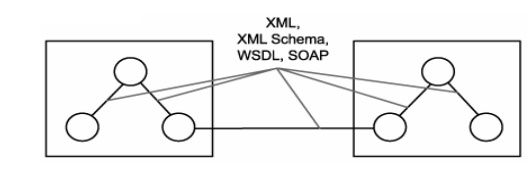
SOA supports vendor diversity

SOA promotes discovery
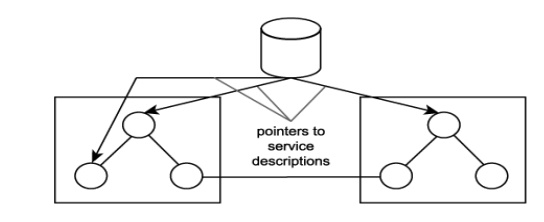
SOA encourages intrinsic
interoperability
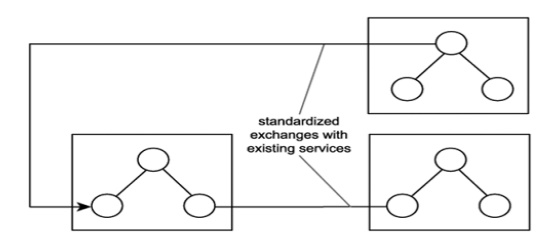
SOA promotes federation

SOA promotes architectural
composability
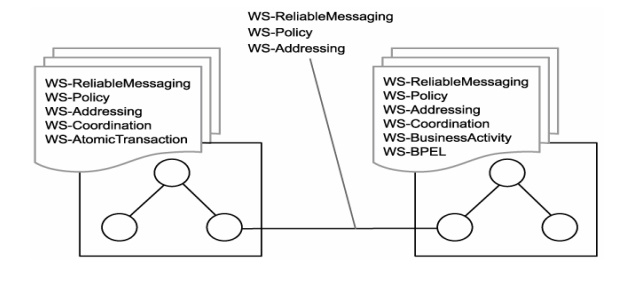
•
Different solutions can be composed
of different extensions and can continue to interoperate as long as they
support the common extensions required.
SOA encourages intrinsic reusability
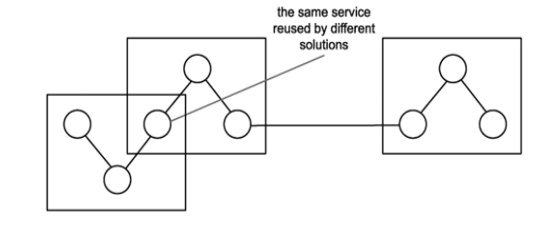
SOA emphasizes extensibility
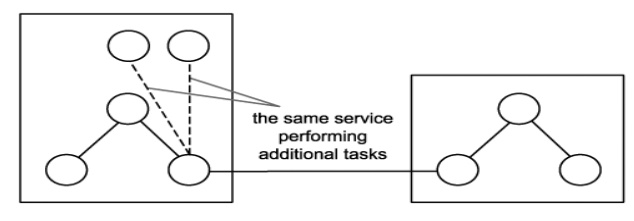
•
Extensible services can expand
functionality with minimal impact.
SOA supports a service-oriented
business modeling paradigm
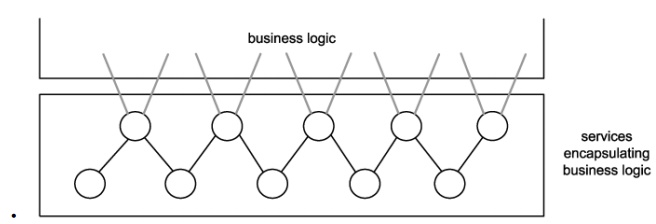
Partitioning business logic into services that can then be
composed has significant implications as to how business processes can be
modeled
SOA implements layers of abstraction
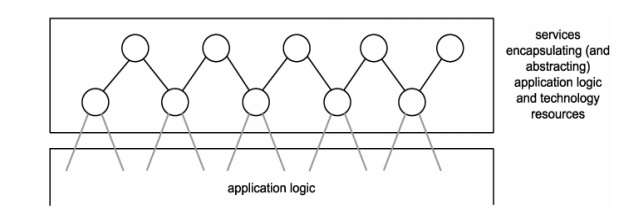
•
Application logic created with
proprietary technology can be abstracted through a dedicated service layer.
SOA promotes loose coupling
throughout the enterprise

SOA promotes organizational agility

Client server Architecture:
•
Mainframe back-ends served thin
clients, are considered an implementation of the single-tier client-server
architecture Mainframe systems natively supported both synchronous and
asynchronous communication. The latter approach was used primarily to allow the
server to continuously receive characters from the terminal in response to
individual key-strokes. Only upon certain conditions would the server actually
respond.
Distributed Internet Architecture:
•
Distributing application logic among
multiple components (some residing on the client, others on the server) reduced
deployment headaches by centralizing a greater amount of the logic on servers.
Server-side components, now located on dedicated application servers, would
then share and manage pools of database connections, alleviating the burden of
concurrent usage on the database server A single connection could easily
facilitate multiple users.
How the components of a
service-oriented architecture relate.
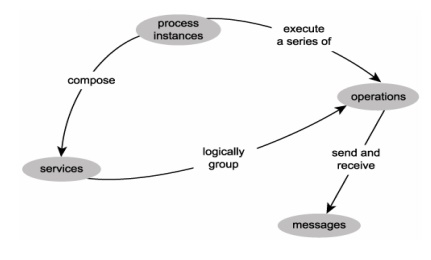
How the components of a
service-oriented architecture define each other.
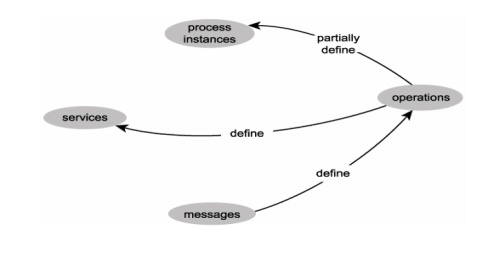
ANATOMY OF SOA
Application
architecture is to an application development team what a blueprint is to a
team of construction workers. Different organizations document different levels
of application architecture.
Service-oriented architecture:
An SOA can refer to
an application architecture or the approach used to standardize technical
architecture across the enterprise.
The components of the basic
(first-generation) Web services framework.
This framework can
be applied to implement services in just about any environment.
1. Logical components of the Web
services framework
Each Web service
contains one or more operations. This diagram introduces a new symbol to
represent operations separately from the service.
Each operation governs the processing
of a specific function the Web service is capable of performing.
The processing
consists of sending and receiving SOAP messages,
The Web services framework provides us not only with a
technology base for enabling connectivity, it also establishes a modularized
perspective of how automation logic, as a whole, can be comprised of
independent units.
The following fundamental parts of the framework:
·
SOAP messages
·
Web service operations
·
Web services
·
activities
The latter three items represent units of logic that perform
work and communicate using SOAP messages.
·
messages
·
operations
·
services
·
processes (and process instances)
Ø The one exception is the use of "process" instead of
"activity."
Ø the word "activity" is used in different contexts when
modeling service-oriented business processes.
Ø Web service activity is typically used to represent the
temporary interaction of a group of Web services,
Ø a process is a static definition of interaction logic. An
activity is best compared to an instance of a process wherein a group of
services follow a particular path through the process logic to complete a task.
·
messages = units of communication
·
operations = units of work
·
services = units of processing logic
(collections of units of work)
·
processes = units of automation logic
(coordinated aggregation of units of work)
Figure 4 provides us with a primitive view of how operations and
services represent units of logic that can be assembled to comprise a unit of
automation logic.
Figure 4. A primitive view of how SOA
modularizes automation logic into units.
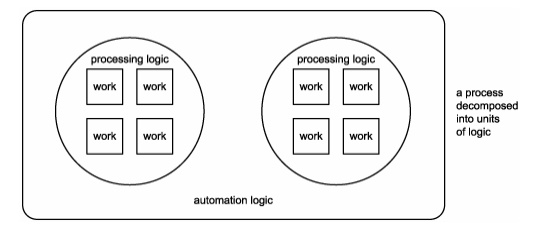
The messages are a suitable means by which all units of
processing logic (services) communicate. No actual processing of that logic can
be performed without issuing units of communication (in this case, messages).
Figure 5 A primitive view of how
units of communication enable interaction between units of logic.
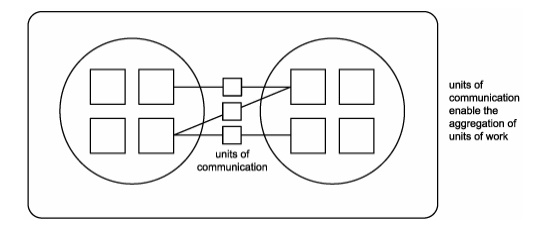
The purpose of these views is simply to express that processes,
services, and operations, on the most fundamental level, provide a flexible
means of partitioning and modularizing logic.
Regardless of the technology platform used, this remains the
most basic concept that underlies service-orientation.
3.
Components of an SOA
·
A message represents the data
required to complete some or all parts of a unit of work.
·
An operation represents the logic
required to process messages in order to complete a unit of work (Figure 6).
Figure 6. The scope of an operation
within a process.
Components of SOA

·
A service represents a logically
grouped set of operations capable of performing related units of work.
·
A process contains the business rules
that determine which service operations are used to complete a unit of
automation. In other words, a process represents a large piece of work that
requires the completion of smaller units of work.
Figure 7. Operations belonging to
different services representing various parts of process logic.

SIGNIFICANCE:
The SOA is important because without this no service can be
provided to the user easy and efficiently
APPLICATION AREA:
The service oriented architecture is used in all the web
oriented service application in internet.
GLOSSARY:
CSA: client server architecture
DIA: Distributed internet architecture
SOA: service Oriented Architecture
SOAP: Simple object access protocol
Related Topics